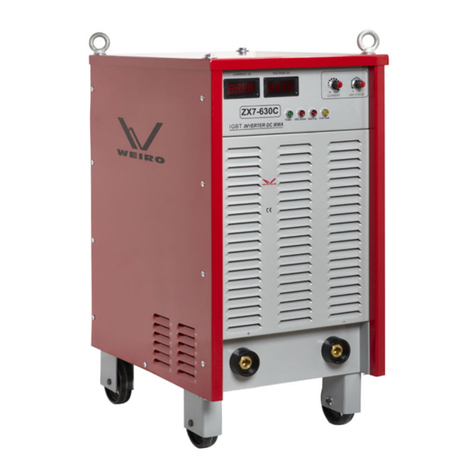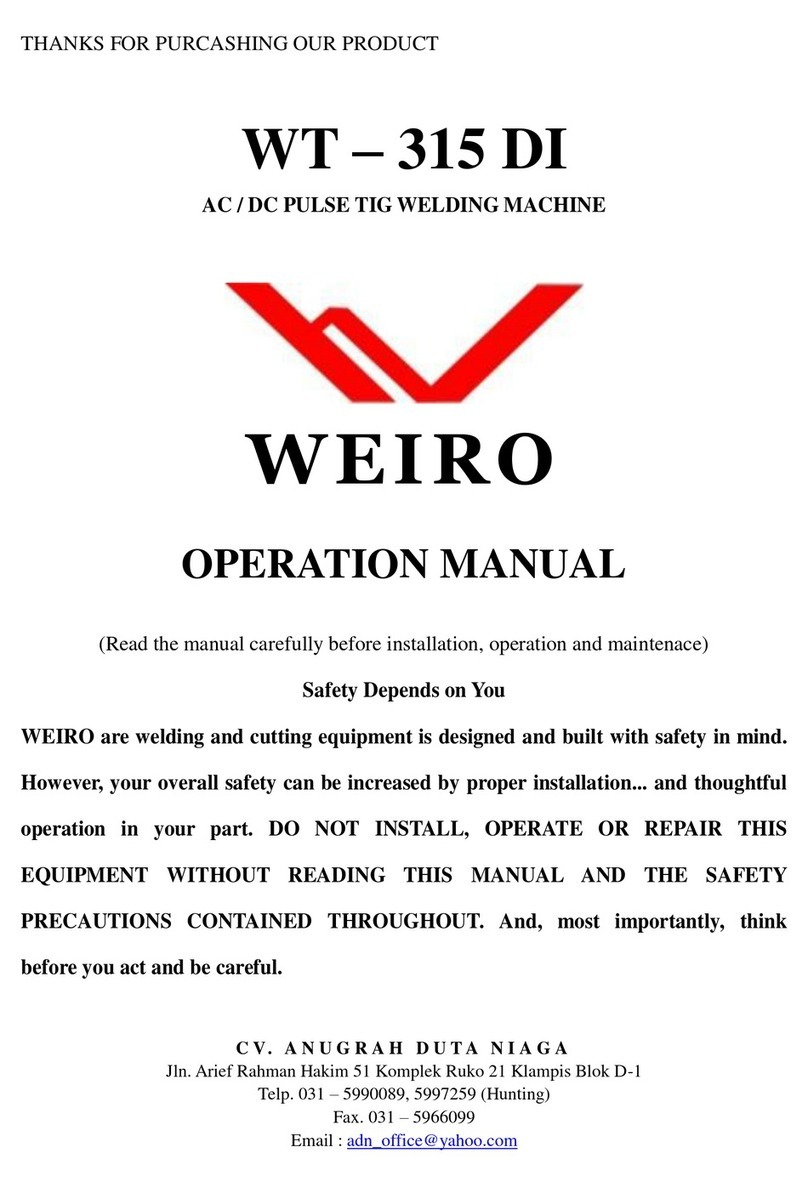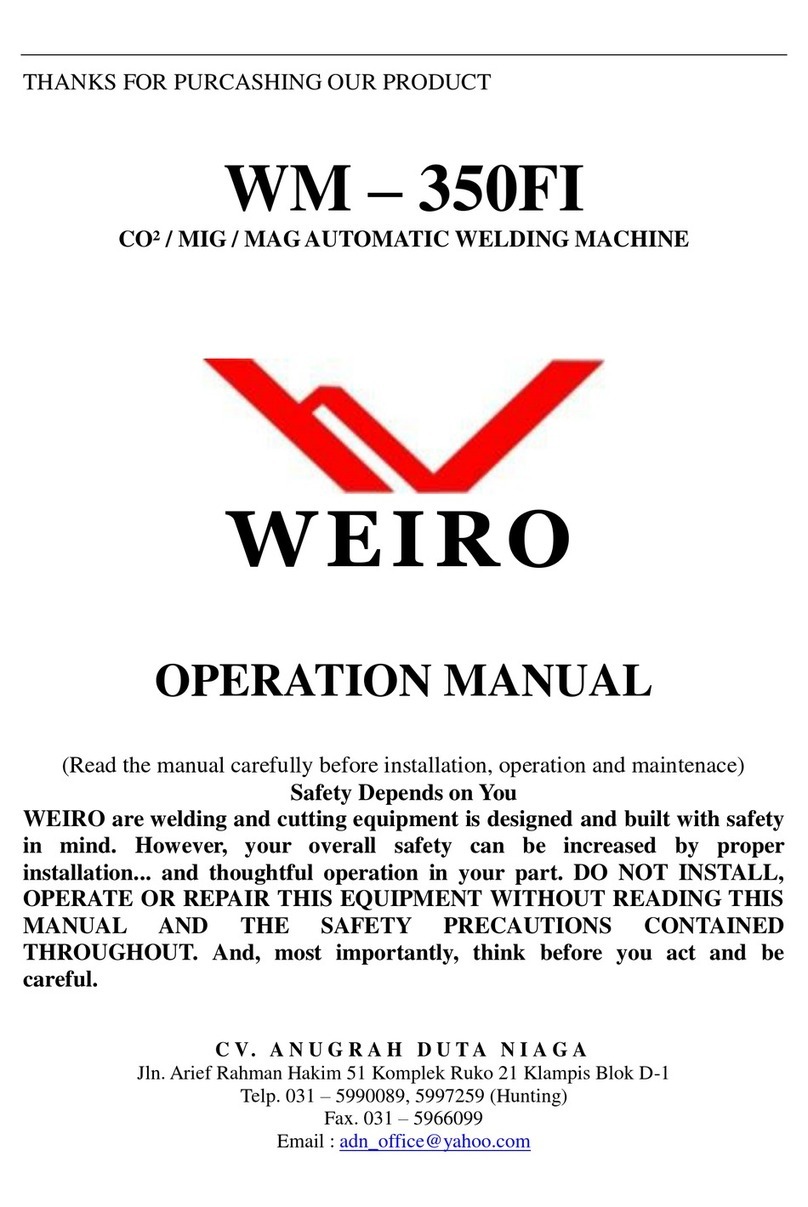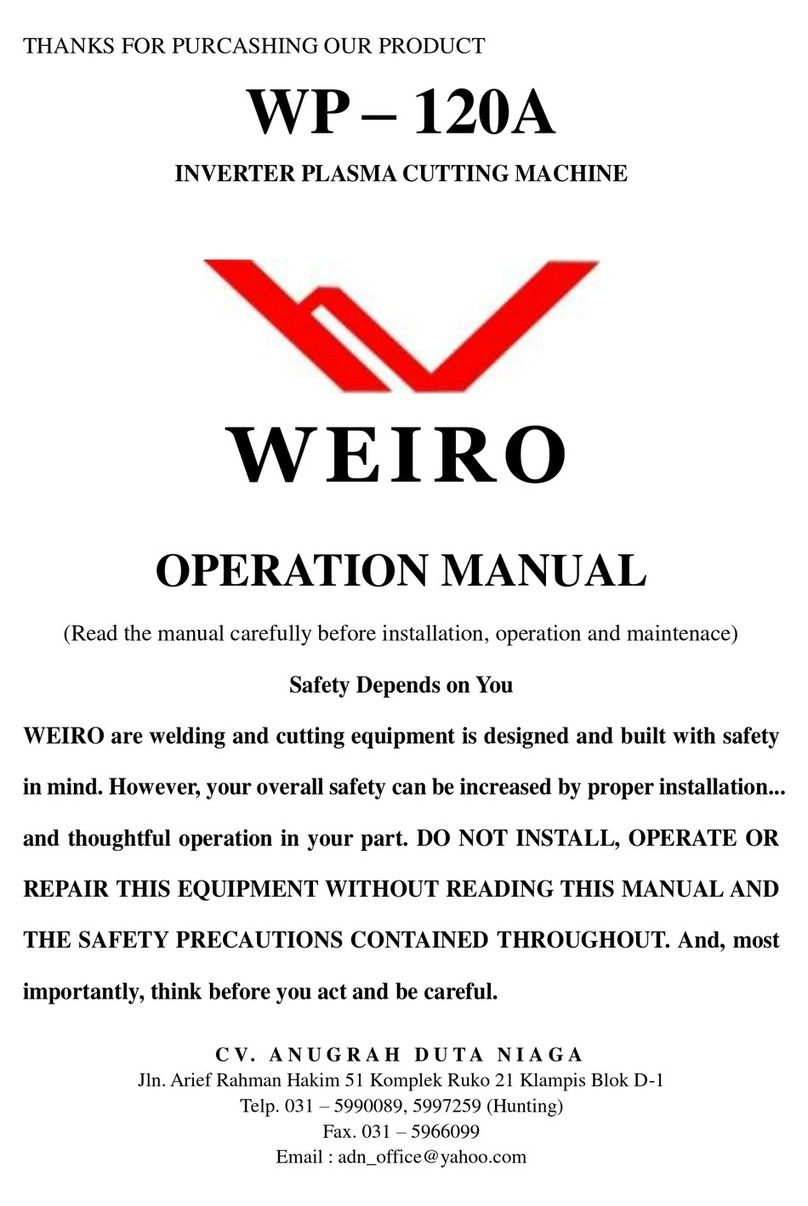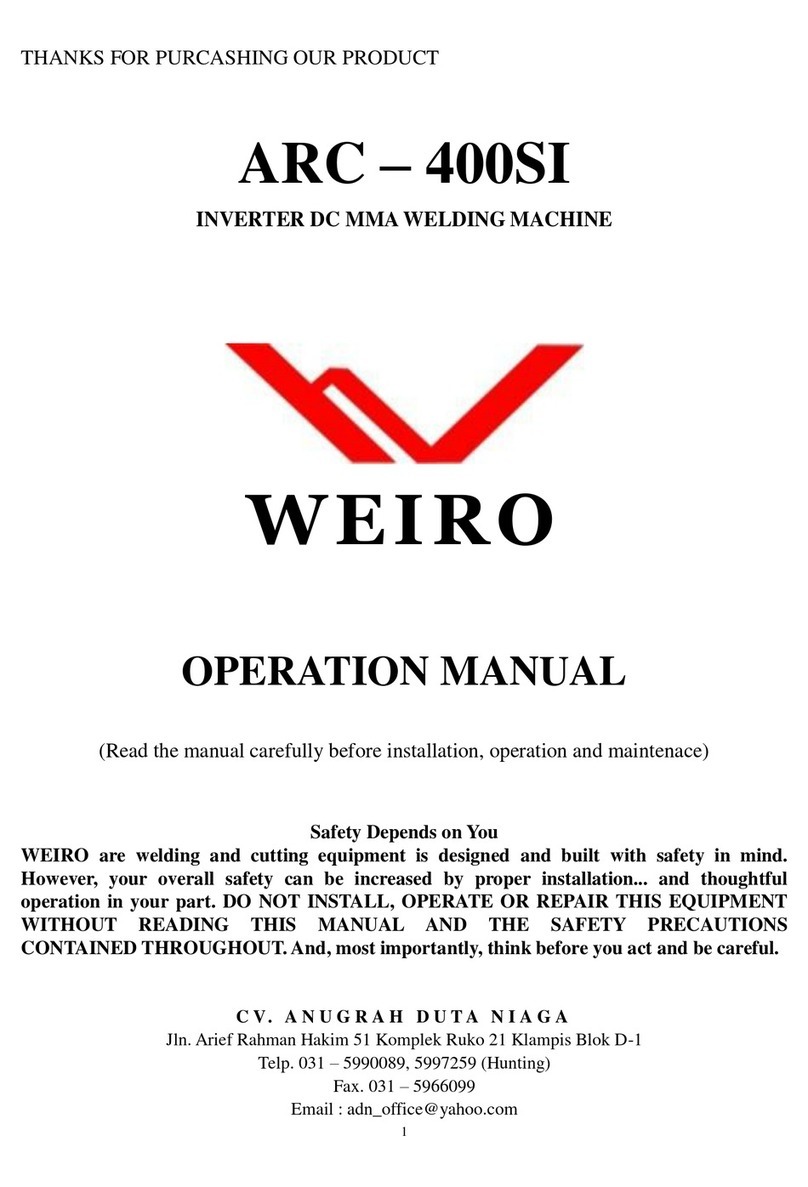Installation Guide
1.Pre-installation
1.1 Installation Environment
FARC series welding machines are designed for use in adverse environments. Examples of
environments with increased adverse conditions are:
In locations in which freedom of movement is restricted, so that the operator is forced to
perform the work in a cramped (kneeling, sitting or lying) position with physical contact with
conductive parts.
In locations which are fully or partially limited by conductive elements, and in which there is
a high risk of unavoidable or accidental contact by the operator.
In wet or damp hot locations where humidity or perspiration considerably reduces the skin
resistance of the human body and the insulation properties of accessories.
Environments with adverse conditions do not include places where electrically conductive
parts, in the near vicinity of the operator, which can cause increased hazard, have been
insulated.
The gradient of ground must be no more than 10°.
Ensure no wind at the welding position, or use screen to block the wind.
The distance between welder and wall must be more than 30cm, between welders more than
10cm to ensure enough heat radiation.
When using water-cooled torch, must be care of not being frozen.
1.2. Installation Location
Be sure to locate the welder according to the following guidelines:
In areas, free from moisture and dust.
Ambient temperature between 0 degrees C to 40 degrees C.
In areas, free from oil, steam and corrosive gases.
In areas, not subjected to abnormal vibration or shock.
In areas, not exposed to direct sunlight or rain.






